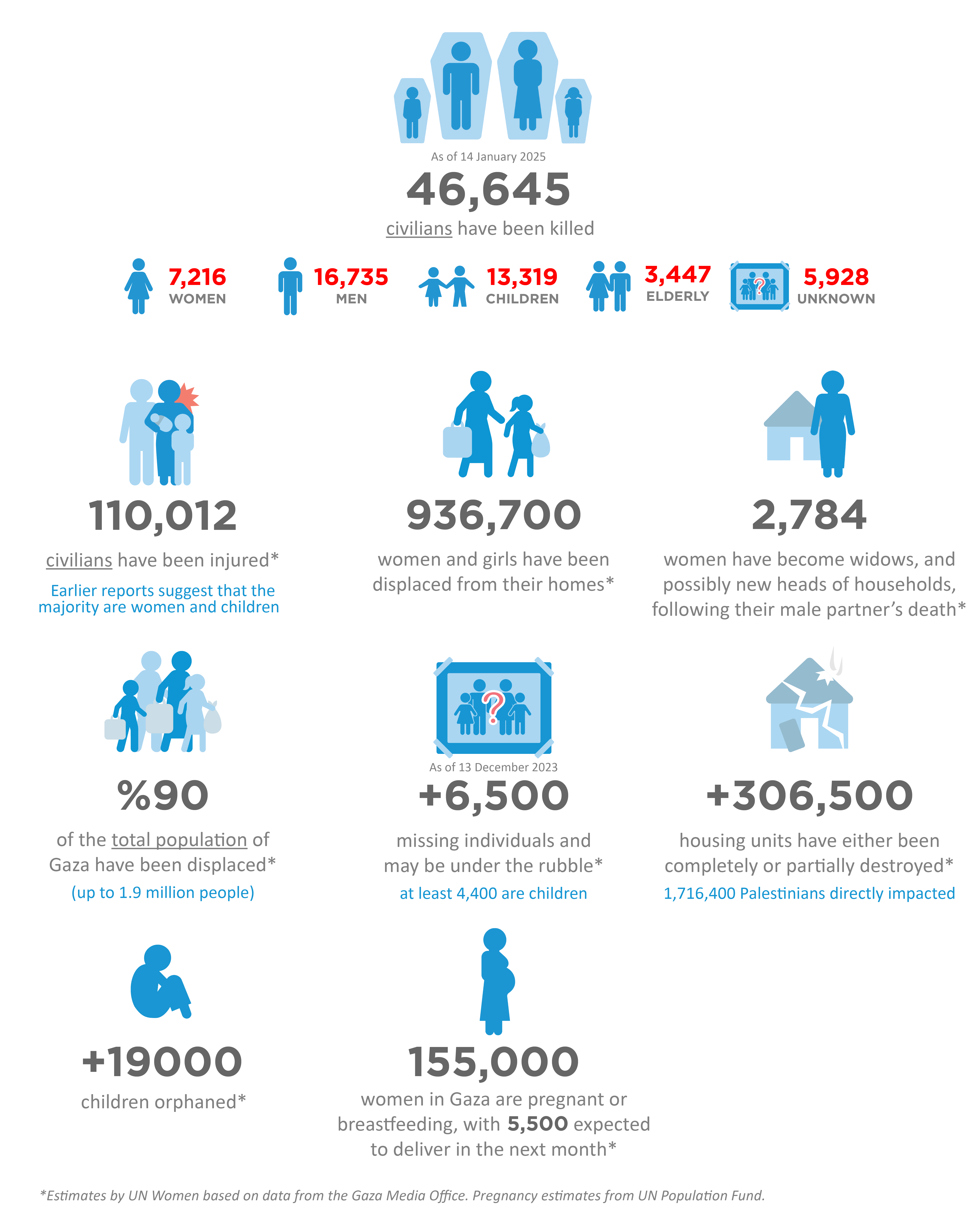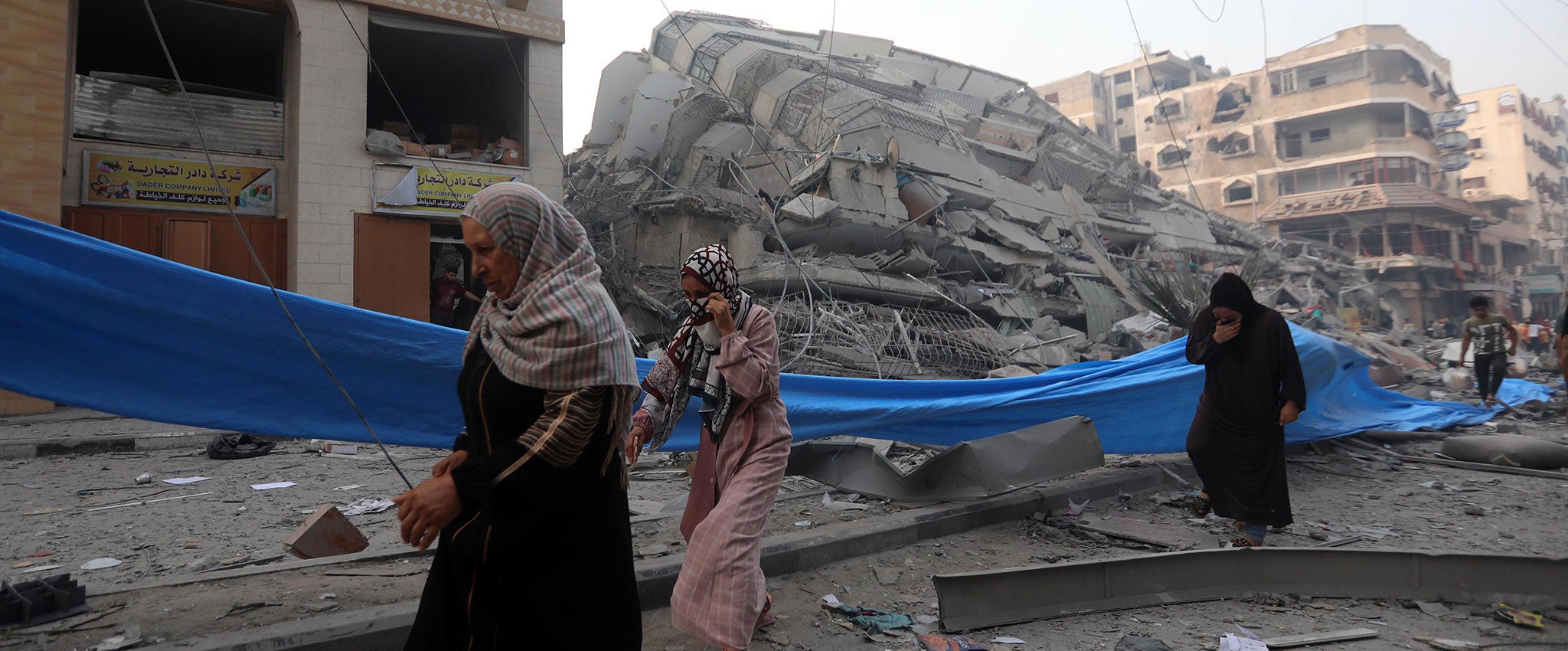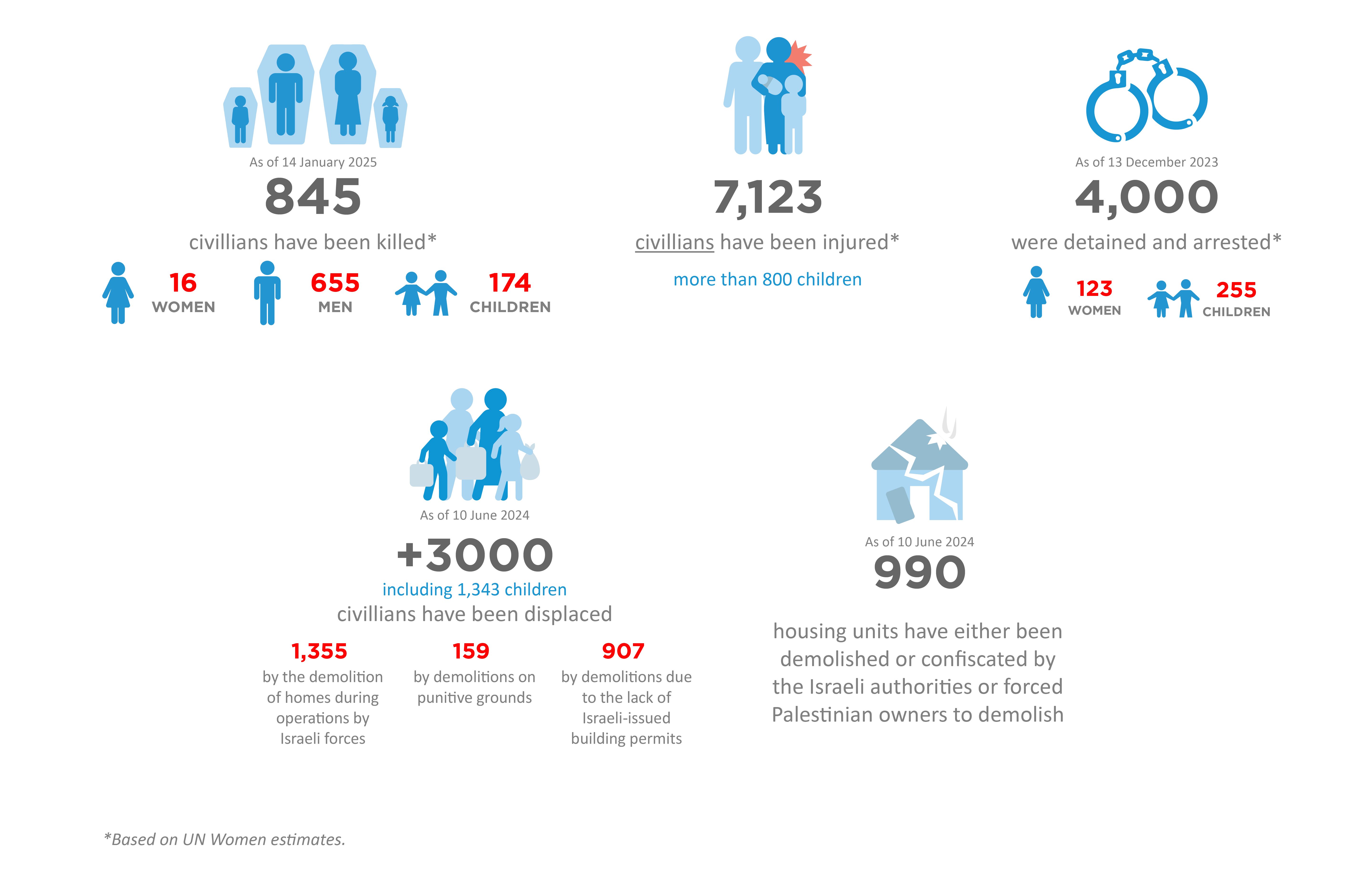Gaza


In the Occupied Palestinian Territory (OPT), humanitarian needs have been traditionally driven by the protracted Israeli occupation of more than 56 years, 16 years of the Gaza blockade, and recurrent hostilities between Israeli security forces and Palestinian armed groups. 2023 has been a year of escalating violence, political uncertainty and deepening of the humanitarian crisis. Before 7 October 2023, the Humanitarian Country Team estimated that approximately 2.1 million Palestinians across the OPT would require some form of humanitarian assistance, out of which 49.2 per cent per cent are women (24 per cent are under 18, 23.7 per cent are between 18 and 65, and 1.5 per cent are above 65). About 53 per cent of the population living below the poverty line and 247,000 are households.[1]
On 7 October, Hamas and other Palestinian armed groups in Gaza launched an attack against Israel, killing about 1,200 people and capturing members of Israeli forces and civilians. The Israeli military declared a “state of war alert” and began striking targets in the Gaza Strip.[2] On 9 October, the Government of Israel ordered a “total siege” on Gaza, cutting off water, electricity, and fuel connections and suspending any entry assistance to inside Gaza. A seven-day humanitarian pause, that saw Hamas release some hostages and an increase in humanitarian aid to Gaza, expired on 1 December. Hostilities in Gaza and Israel are ongoing, making meaningful humanitarian efforts “nearly impossible”, while violence in the West Bank has surged.
Women living in Gaza have unique and urgent needs and vulnerabilities, both relating to the current conflict and due to structural gender discrimination, including laws in Palestine which assume women to be under the protection and guardianship of men. The escalation created protection crisis for all people in Gaza, elevated protection needs especially for single women, women heads of households, adolescent girls, women with disabilities, older women. Over-crowded shelters do not allow privacy for women and girls. Access to food and water is very limited, and this has severe impacts particularly for lactating women and young women. Women and girls do not have access to safe and dignified latrine and bathing facilities. Menstrual hygiene of women and girls is compromised. Women and girls need to access safe shelter, food, water, sex-segregated dignified and safe WASH facilities, health services, including sexual and reproductive health and psycho-social support. They should have access to the essential non-food items, such as dignity kits, sanitary pads, winter clothes and assistive devices. Gender-responsive humanitarian aid must reach to the most vulnerable women including women head of households, single women, pregnant women, women with disabilities, women with chronic diseases, and older women.
Violence continues to spread beyond Gaza. Prior to 7 October, the year 2023 was already proving to be one of the deadliest years in the West Bank since the Second Intifada[3]. The destruction of Palestinian structures in the West Bank, most alarmingly of homes, commercial buildings, schools, and health facilities had reached the highest level in six years[4]. The continued destruction of public infrastructure and housing, and the revocation of Israeli work permits, and other movement restrictions have also significantly impacted the livelihoods of Palestinians in the West Bank.
Following the escalation of hostilities, UN Women has worked to analyze the differentiated impact of the crisis on women, men, boys, and girls, to ensure adequate responses to their needs. The data below, consisting of estimated figures, shows some of the issues of how women and girls in Gaza as well as the West Bank have been impacted since 7 October 2023.
As of 14 January 2025, at least 46,645 Palestinians were killed in Gaza. About 70 per cent of those killed are said to be women and children.110,012 Palestinians have been injured. Many people are missing, presumably buried under the rubble, with many still waiting for rescue or recovery.


Last updated on 20 January 2025
UN Women has been supporting Palestinian women since 1997 to achieve their social, economic, and political rights.
[1] https://www.ochaopt.org/content/humanitarian-needs-overview-2023
[2] https://www.ochaopt.org/content/flash-appeal-occupied-palestinian-territory-202
[3] Israel/Palestine: UN experts condemn renewed violence and Israeli killings of Palestinians in occupied West Bank